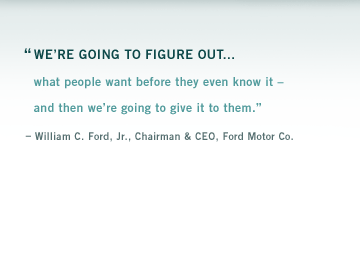Effective Feedback in the Digital Age: Leveraging Technology for ImprovementStep into the realm of education where feedback isn't just a routine part of assignments; it's your secret ally for growth and improvement. In this digital age of learning, feedback takes on a new dimension, weaving together the traditional with the technological. Join me in unraveling the magic of effective feedback, where each comment is a nugget of wisdom, and technology is the guide on this educational adventure. It's more than grades; it's about leveraging technology to turn every piece of feedback into a valuable tool for your ongoing learning journey. The Core Principles of Effective FeedbackClear CommunicationThe cornerstone of effective feedback lies in clear communication. When feedback is delivered with precision, students gain a roadmap to enhance their understanding and performance. Clarity in feedback is not only about what is said but how it is conveyed. For students, interpreting and understanding feedback can be a skill in itself. To navigate this, consider breaking down complex feedback into actionable steps, providing examples, and encouraging students to seek clarification when needed. Specific and Constructive CritiqueEffective feedback is not merely a list of corrections; it's a constructive dialogue that guides improvement. Specificity in feedback enhances its impact, giving students a targeted direction for enhancement. Discussing the value of specific and constructive feedback empowers students to see feedback not as criticism but as a valuable tool for refining their skills. Encourage educators to highlight what was done well, pinpoint areas for improvement, and offer actionable suggestions. Timeliness in FeedbackThe timely delivery of feedback is akin to striking while the iron is hot. It enhances the learning process by providing immediate insights when the material is fresh in students' minds. Exploring the impact of timely feedback, both educators and students can adopt strategies to ensure prompt responses. For educators, this might involve setting clear deadlines for feedback, while students can proactively seek feedback shortly after completing assignments. Leveraging Technology for Enhanced FeedbackDigital Platforms for FeedbackTechnology offers a myriad of digital platforms that enrich the feedback loop. Whether through learning management systems, online portals, or dedicated feedback tools, these platforms provide a dynamic space for interaction. Introducing various digital platforms used for feedback opens up a world of possibilities. Emphasize the benefits of online tools, such as instant accessibility, multimedia integration, and the ability to track progress over time. Audio and Video FeedbackThe advantages of audio and video feedback extend beyond the limitations of text-based comments. Exploring the benefits of audio and video feedback, students can appreciate the nuances in tone, emphasis, and expression that these mediums provide. Tips for receiving and utilizing multimedia feedback effectively can include actively listening, taking notes, and revisiting the feedback to fully comprehend the nuances conveyed. Automated Feedback SystemsAutomated feedback systems contribute to the efficiency of the learning process by providing instant insights. While discussing the role of automated systems, it's essential to address both their limitations and benefits. Automated systems can expedite the feedback process, but students need to understand their context and potential constraints. Encourage a balanced perspective, highlighting situations where automated feedback complements but doesn't replace personalized insights. Student Strategies for Maximizing Digital FeedbackActive Engagement with FeedbackEffective feedback isn't a passive receipt of information; it's an active engagement that involves reflection and implementation. Encouraging students to actively engage with feedback received is crucial. Strategies for implementing feedback for continuous improvement can include setting specific goals based on feedback, seeking additional resources for improvement, and reflecting on the learning process. Seeking ClarificationThe empowerment to seek clarification when feedback is unclear fosters a healthy feedback dialogue between students and educators. This section emphasizes the importance of communication in the feedback loop. Students should feel encouraged to ask questions, seek examples, and engage in a constructive conversation with educators to deepen their understanding of the feedback provided. Balancing Digital and Traditional FeedbackWhile technology brings innovation, the importance of a balanced approach to feedback methods cannot be overstated. Discussing the significance of integrating both digital and traditional feedback methods encourages students to harness the strengths of each approach. Understanding how students can blend the benefits of technology with the personal touch of traditional feedback creates a holistic approach to improvement. As we conclude this exploration into the realm of effective feedback in the digital age, the spotlight turns to the pivotal role technology plays in modern education. Emphasizing the role of technology is not about replacing traditional methods but about enhancing the feedback experience. The journey we've undertaken is not just about assignments or assessments; it's about leveraging the tools at our disposal to create a learning environment where every piece of feedback propels students toward continuous improvement. In this collective endeavor, let's embrace the synergy of traditional wisdom and technological innovation, making education a canvas where feedback paints a vivid and enriching picture of growth and achievement. |







